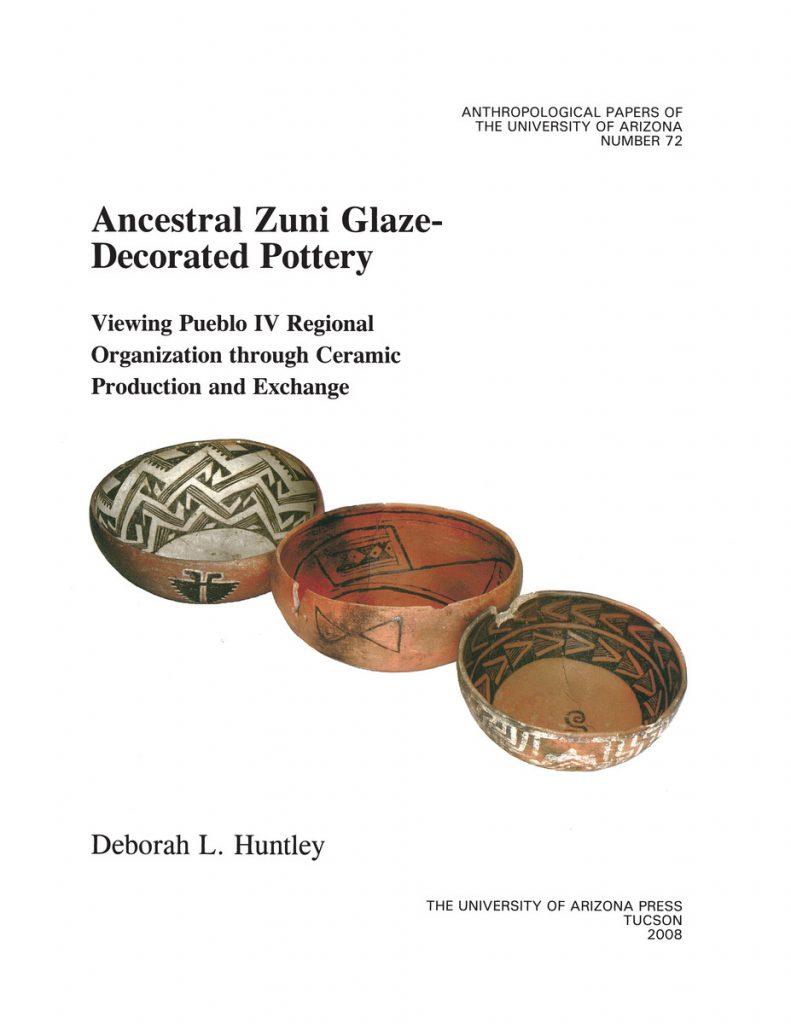Ancestral Zuni Glaze-Decorated Pottery
Viewing Pueblo IV Regional Organization through Ceramic Production and Exchange
Ebooks (Open Access)
Read Online
Paperback ($21.95)
Buy
The Pueblo IV period (AD 1275–1600) witnessed dramatic changes in regional settlement patterns and social configurations across the ancestral Pueblo Southwest. Early in this interval, Pueblo potters began making distinctive polychrome vessels, often decorated with technologically innovative glaze paints. Archaeologists have linked these ceramic innovations with the introduction of new ideologies and religious practices to the area. This research explores interaction networks among residents of settlement clusters in the Zuni region of westcentral New Mexico during the thirteenth and fourteenth centuries AD. Using multiple analytical techniques, this research provides a case study for documenting multiple scales of interaction in prehistory. Ceramicists will find a wealth of technological and contextual data on glaze-decorated pottery, and archaeologists interested in power and leadership in ancestral Pueblo societies will be intrigued by the implication that strategies like the manipulation of interpueblo alliances or control over long-distance resources may have been used to concentrate social power.
 The University of Arizona Press
The University of Arizona Press

